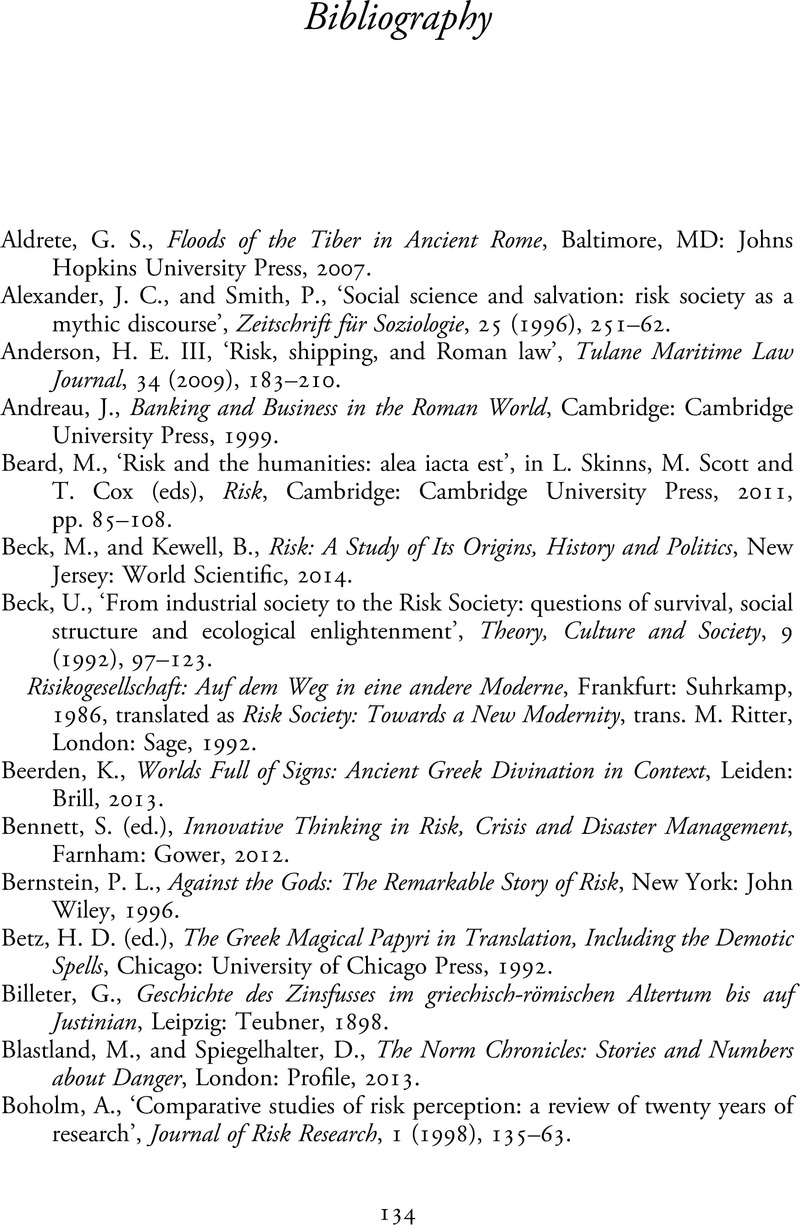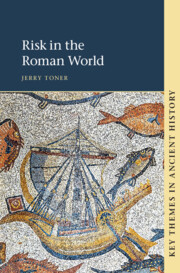Book contents
- Risk in the Roman World
- Key Themes in Ancient History
- Risk in the Roman World
- Copyright page
- Contents
- Acknowledgements
- Chapter 1 Risk and Uncertainty
- Chapter 2 A World Full of Risks
- Chapter 3 A Risk Culture
- Chapter 4 Risk Management
- Chapter 5 Moral Hazards
- Chapter 6 Conclusion
- Further Reading
- Bibliography
- Index
- References
Bibliography
Published online by Cambridge University Press: 16 November 2023
- Risk in the Roman World
- Key Themes in Ancient History
- Risk in the Roman World
- Copyright page
- Contents
- Acknowledgements
- Chapter 1 Risk and Uncertainty
- Chapter 2 A World Full of Risks
- Chapter 3 A Risk Culture
- Chapter 4 Risk Management
- Chapter 5 Moral Hazards
- Chapter 6 Conclusion
- Further Reading
- Bibliography
- Index
- References
Summary

- Type
- Chapter
- Information
- Risk in the Roman World , pp. 134 - 143Publisher: Cambridge University PressPrint publication year: 2023



